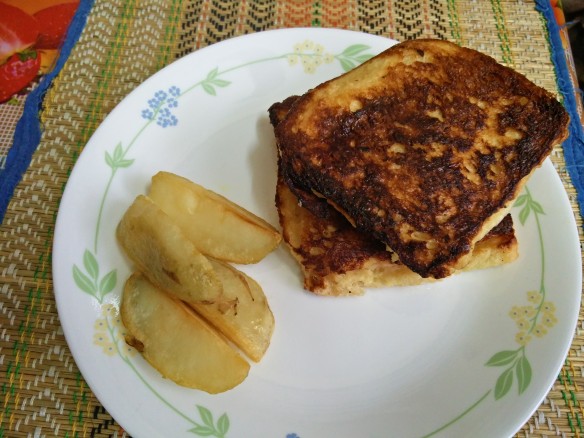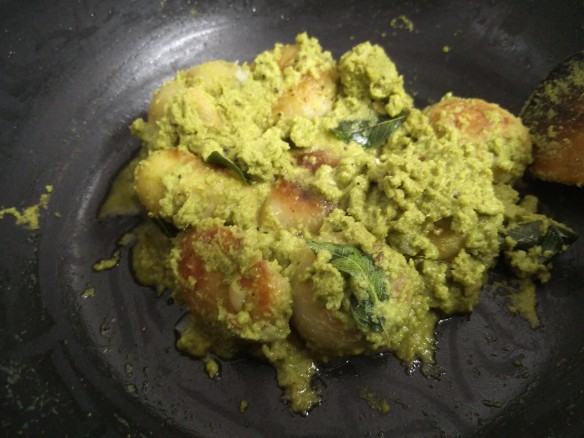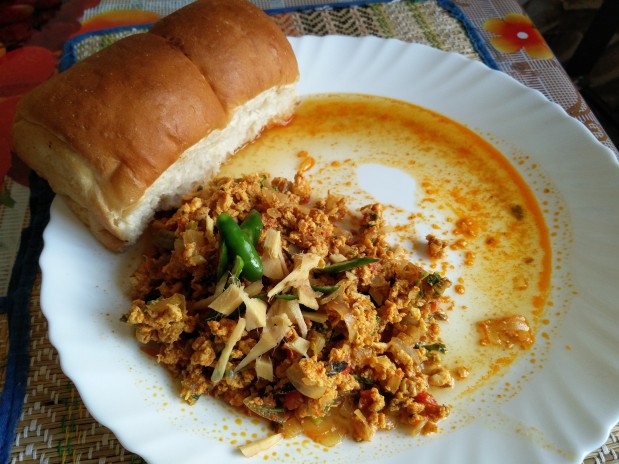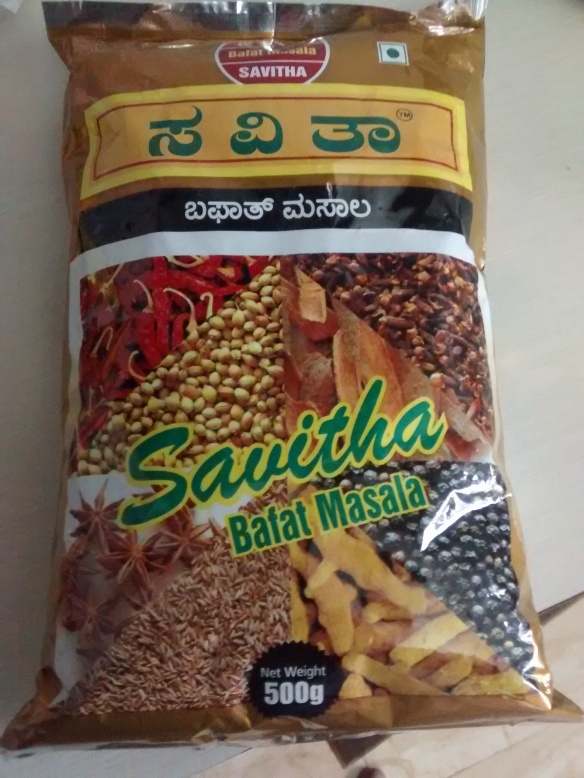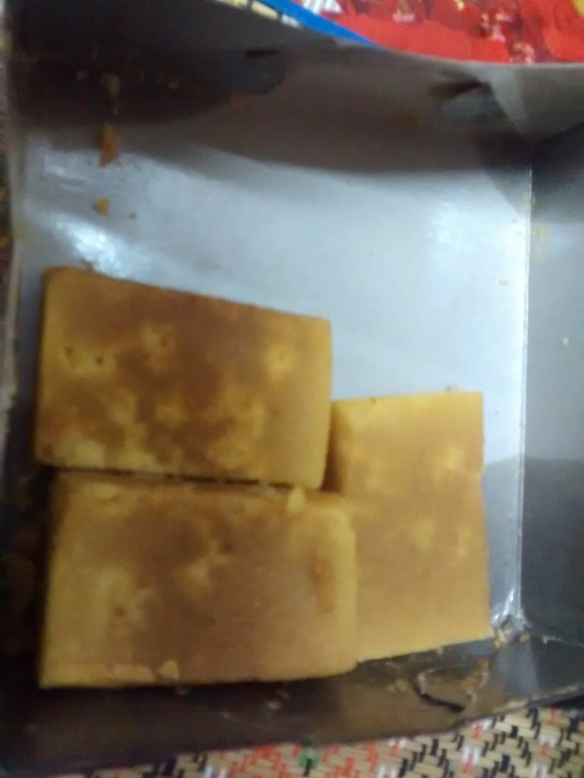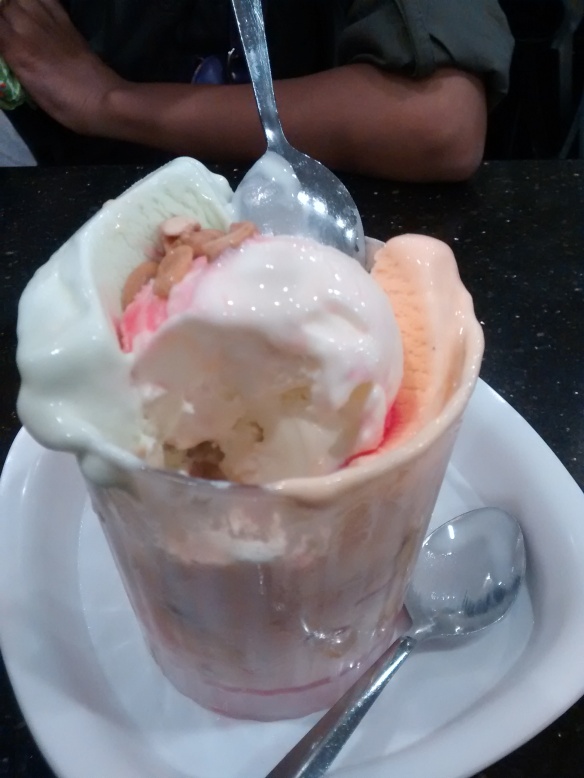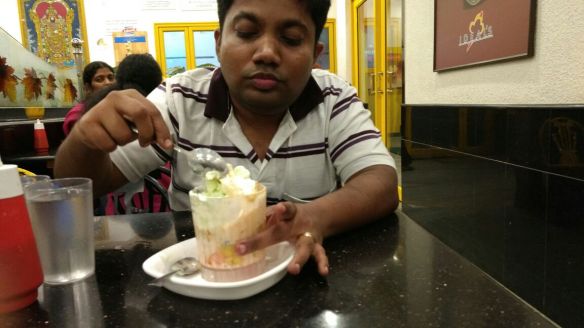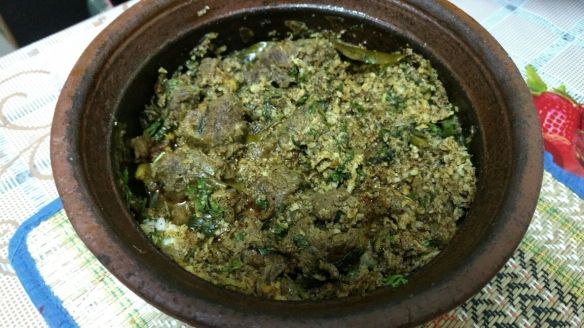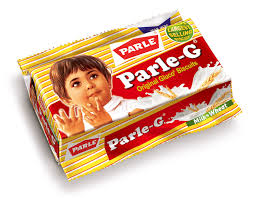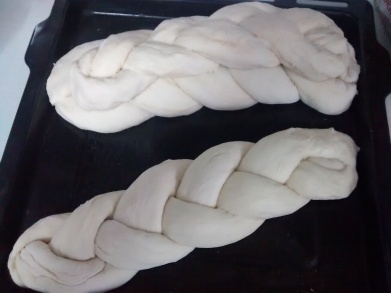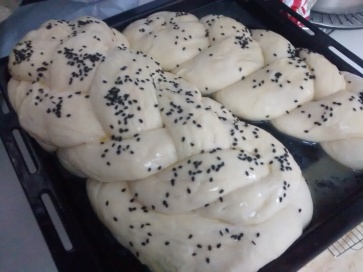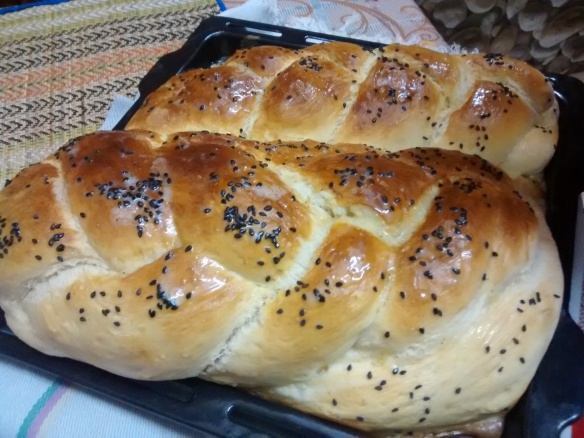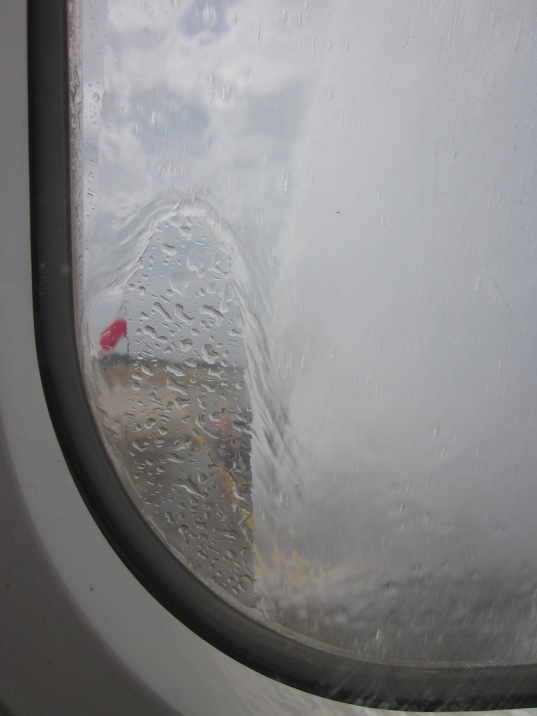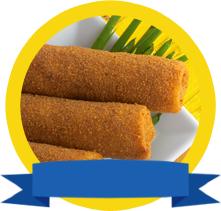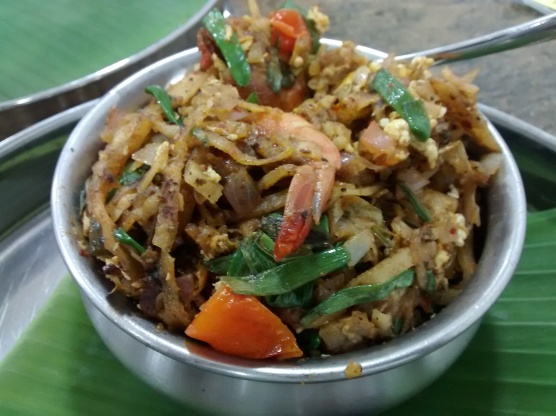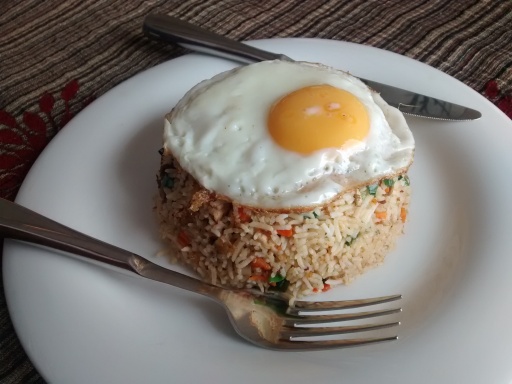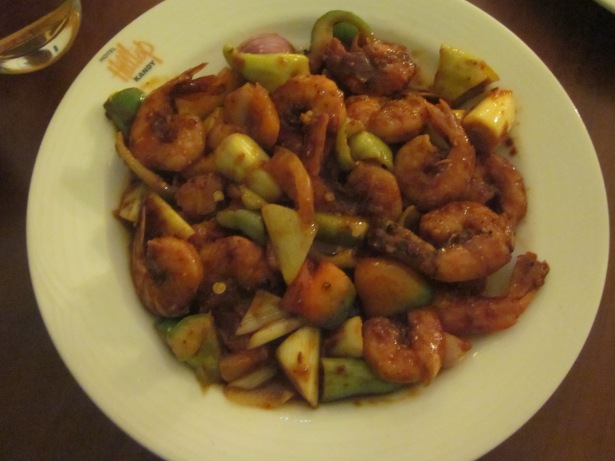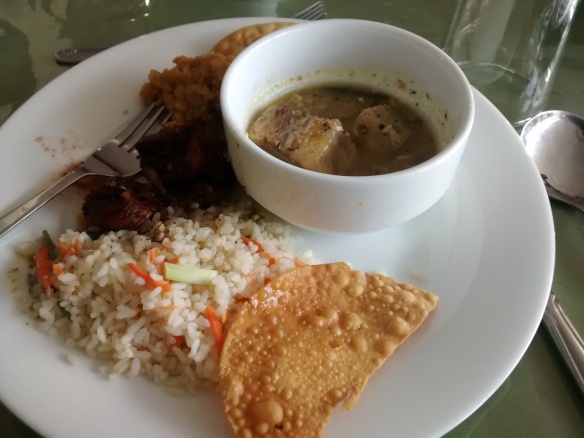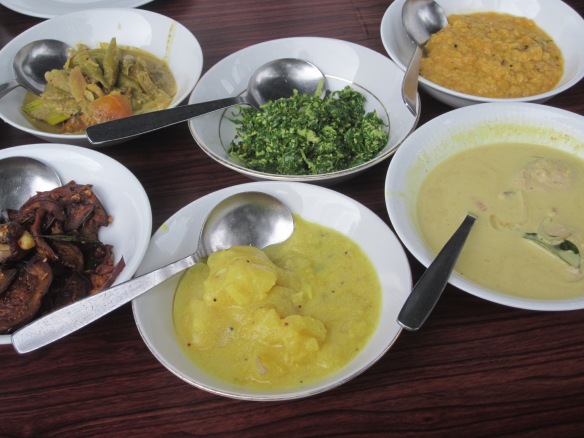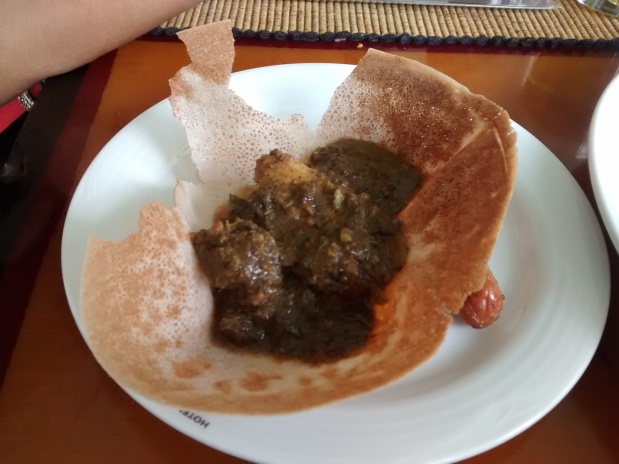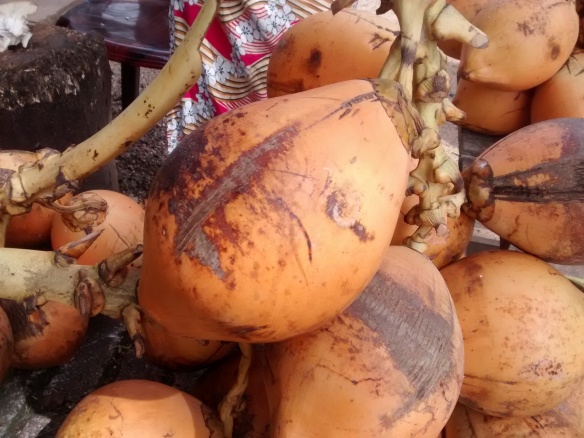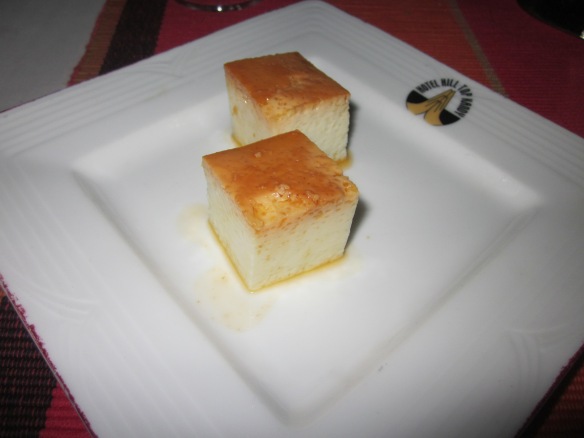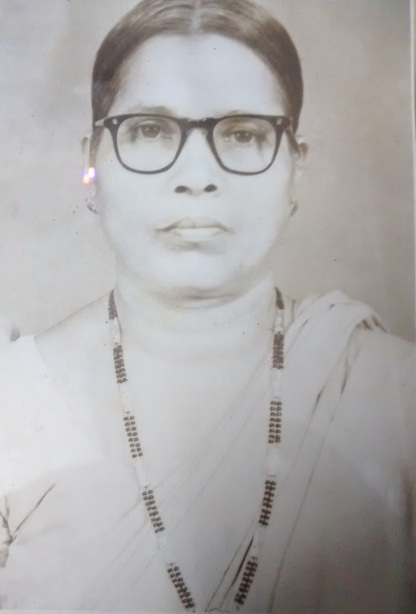There is a certain romance about curries. The joy of breaking a buttered naan into a thick, redolent butter chicken gravy is difficult to put to prose. Down south, you have crisp rice rotis playing a demure foil to the fiery kori ghassi in Mangalore ; while brown rice or appams marry well with the keralan meen moillee. I could go on and on about curries and their pairings with rice or some sort of bread. Point is, across the world, curries form an intrinsic part of the meal; or should i say, they complete the meal.
For us Mangaloreans, fish curry and rice is the raison d’etre. It was in my household too. I didnt like curry so much personally; but, I made and exception for the Kori ghassi (chicken curry). What interested me more was the process by which the curry was made. I would eagerly sit beside my mai (grandmother) as she scraped the coconut, and swiftly grab some and eat it, only to be reprimanded by a stern “Ummm”, not because i took the coconut. but she was scared that I’d hurt myself. Then she’d measure the spices with her fingers and then came the rhythmic grunting of the huge stone (we call it waan in konkani). Then the tempering and an amazing curry was ready. What amazed me though was the consistency with which she got the colour and texture of the curry same, each and everytime. A trait her daughter, my mother has inherited. And I am only smiling 🙂
And if you haven’t guessed as yet, I am going to share with you a recipe for a curry. This is a curry from across the Palk Strait, Sri Lanka to be precise. I went to Sri Lanka on a holiday last year and i was totally enamoured by the scenic beauty and the food. To be fair, the food isn’t much different from the food in south India but the ample and deft use of spices is where the difference lies. SO if you are well versed with South Indian food, Sri Lankan food isnt a difficult nut to crack. This isn’t my recipe but I’ve adapted this one from a recipe by Peter Kuruvita. The original recipe used squid or cuttlefish. Lobsters rendered themselves well to. I loved the addition of coconut milk to the gravy, rich and thick and creamy. We had it with brown rice that suited the spicy curry perfectly well.
I strongly recommend you try this one, you can write and tell me how you liked it.
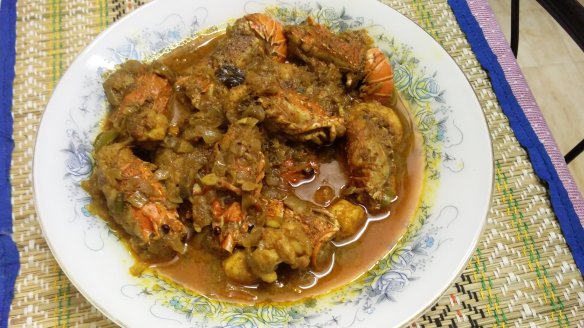
Lobster Curry- Sri Lankan Style.
You will need
- 10-12 Baby Lobsters
For the marination:
- 2 teaspoons – pepper powder
- 1 lemon sized ball of tamarind soaked in warm water
- 1 teaspoon turmeric powder
- 2 teaspoons cumin powder
- 4 teaspoons red chilli powder (tone down or up depending on how much heat you can take)
- 2 teaspoons Sri Lankan roasted curry powder
- 3-4 fenugreek seeds
- 1 teaspoon corriander powder
For the curry:
- 80 ml coconut oil
- few sprigs of curry leaves
- 1 small onion, finely diced
- 4-5 cloves of garlic, minced
- 1 small piece of ginger, minced
- 3-4 green chillies, finely chopped
- 1 teaspoon, red chilli powder
- 1 cup of 2nd extract of coconut
- 60 ml, 1st extract of coconut
- salt to taste
Method:
- Wash, clean and devein the lobsters.
- In a large vessel combine the ingredients mentioned under marination along with the lobsters and keep aside.
- In another pot, heat the coconut oil and add the curry leaves.
- Once the leaves start to splutter, add the onion, garlic, ginger, green chillies and cook till the onions are browned well
- Now, add the red chilli powder and mix well. If you see the pan getting dry , sprinkle a few drops of water.
- Now add the 2nd extract of coconut and salt. Cover and cook for 10-12 mins till the lobsters are done.
- Reduce the flame to to the lowest you can to bring down the temperature and take the vessel of the heat and add in the first extract of coconut. Give it a good mix and take of flame immediately.
- Serve hot with brown rice.
Pro -tip: Use the first extract of coconut milk ONLY towards the end. And make sure the flame isn’t high cause if you cook the coconut link for too long it will curdle and look terrible.

